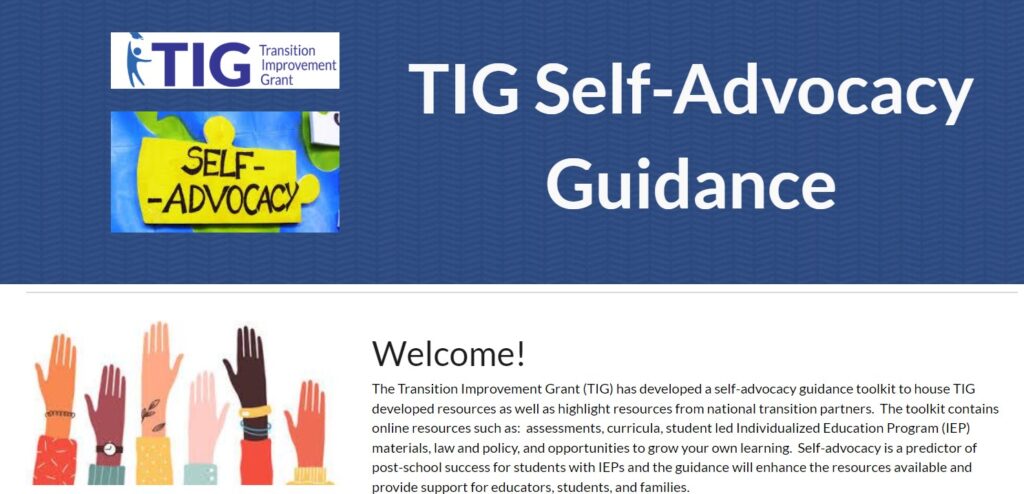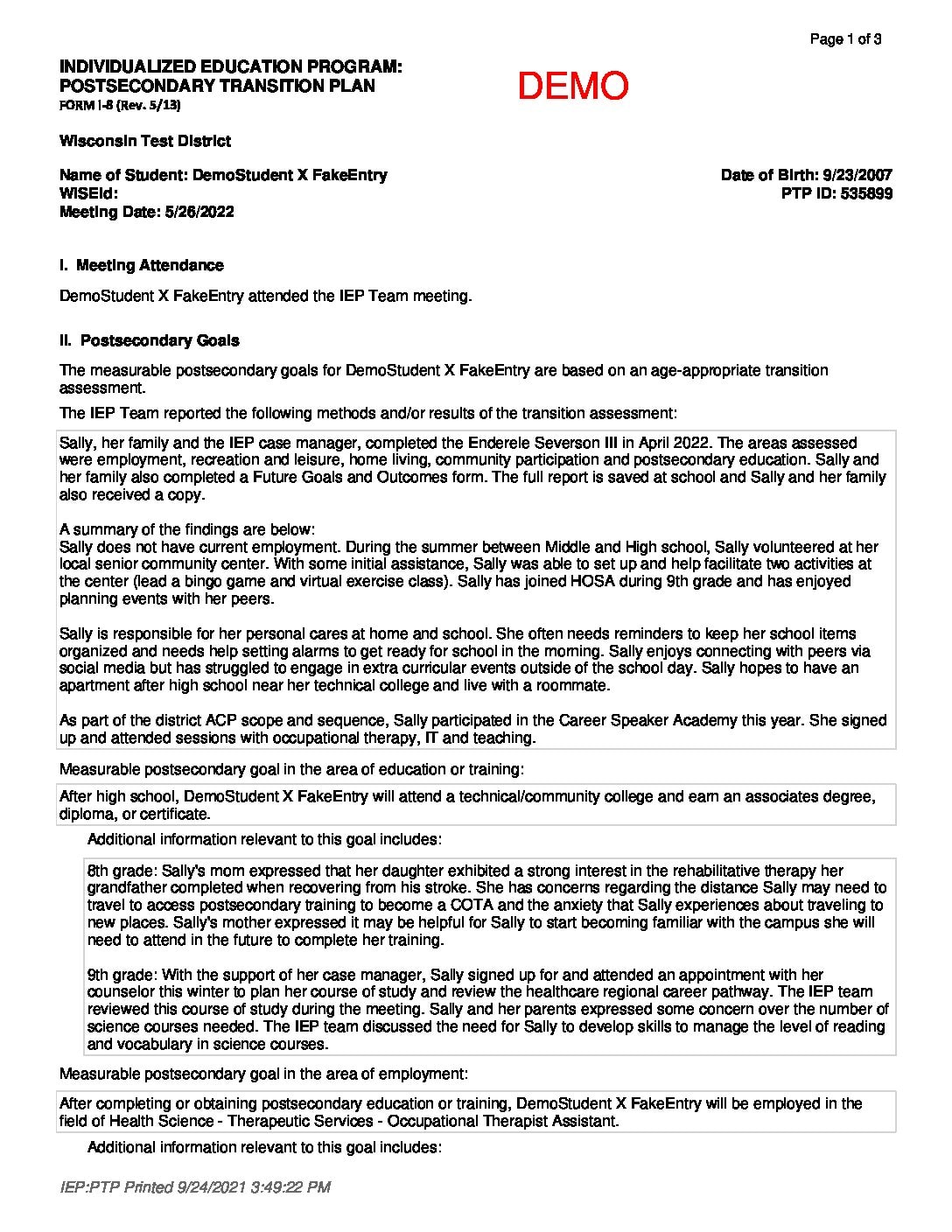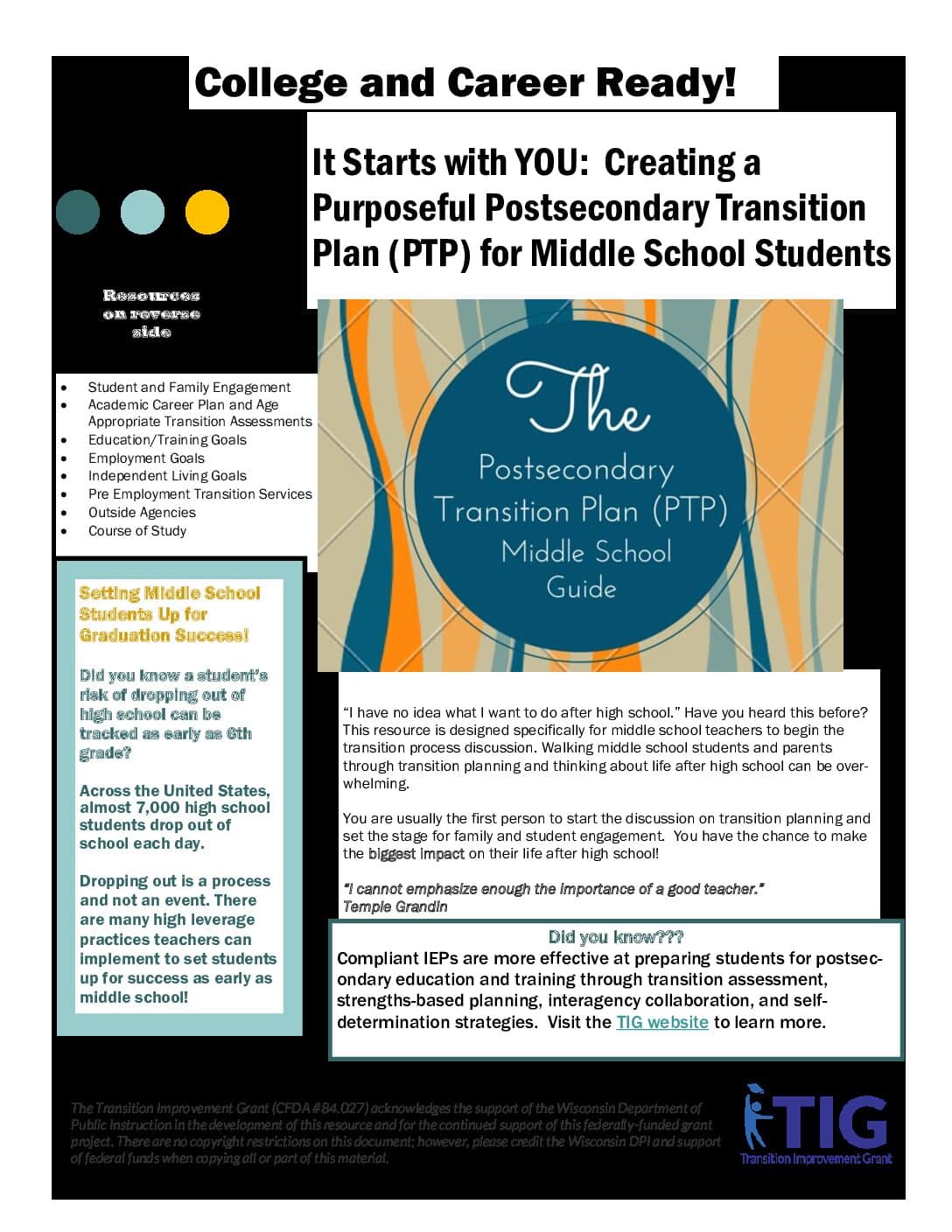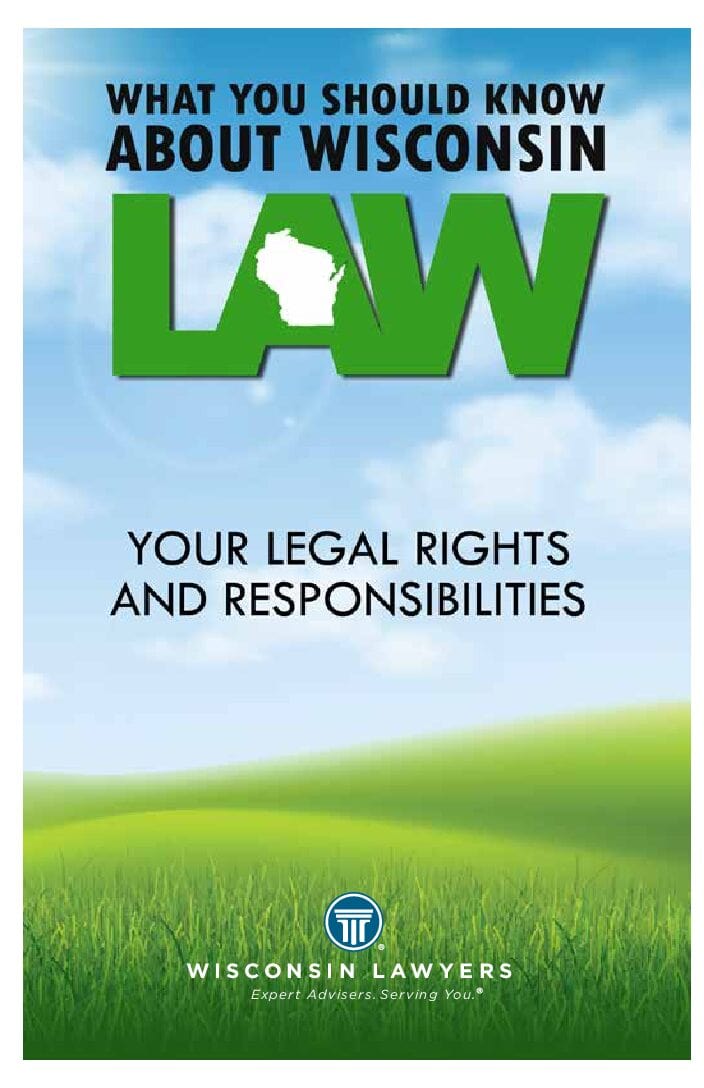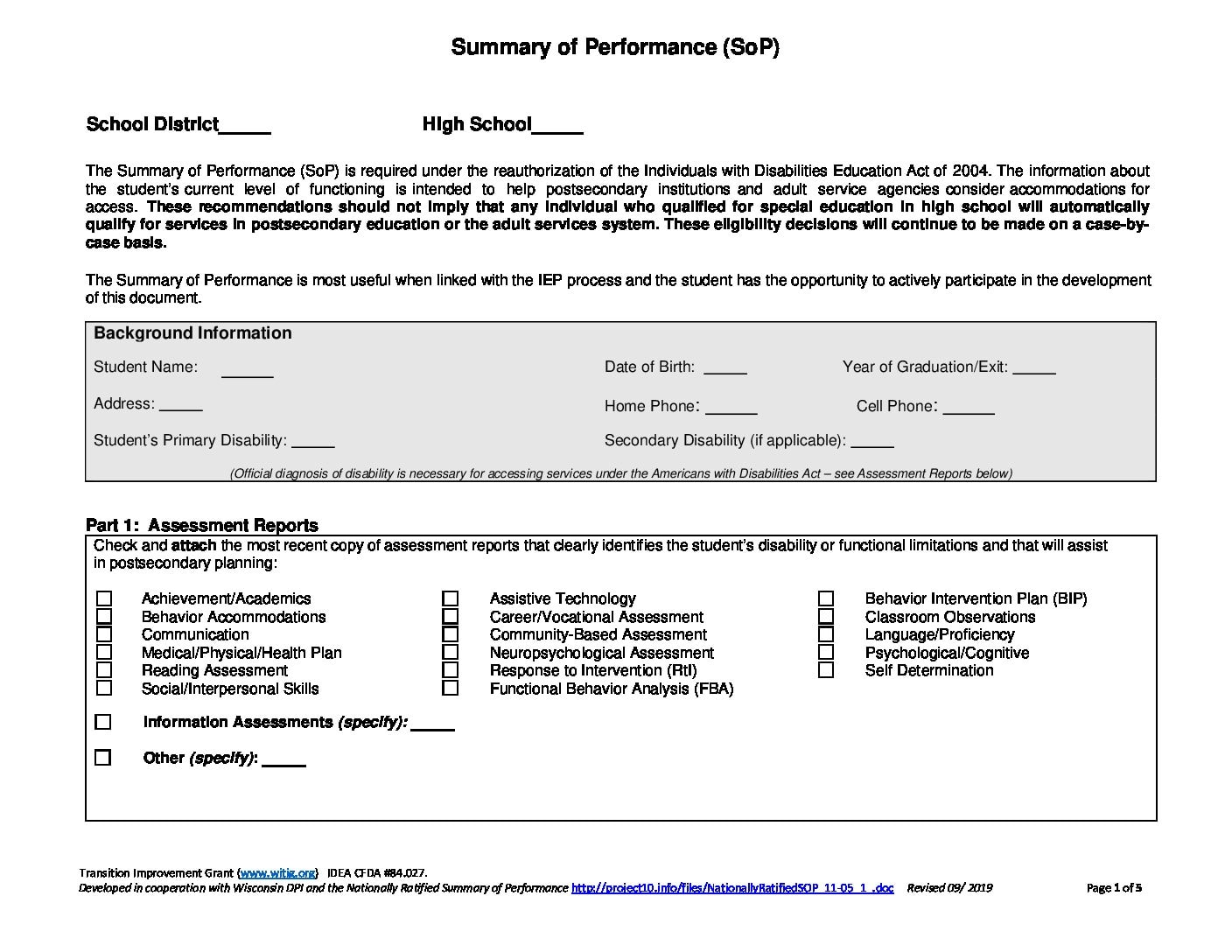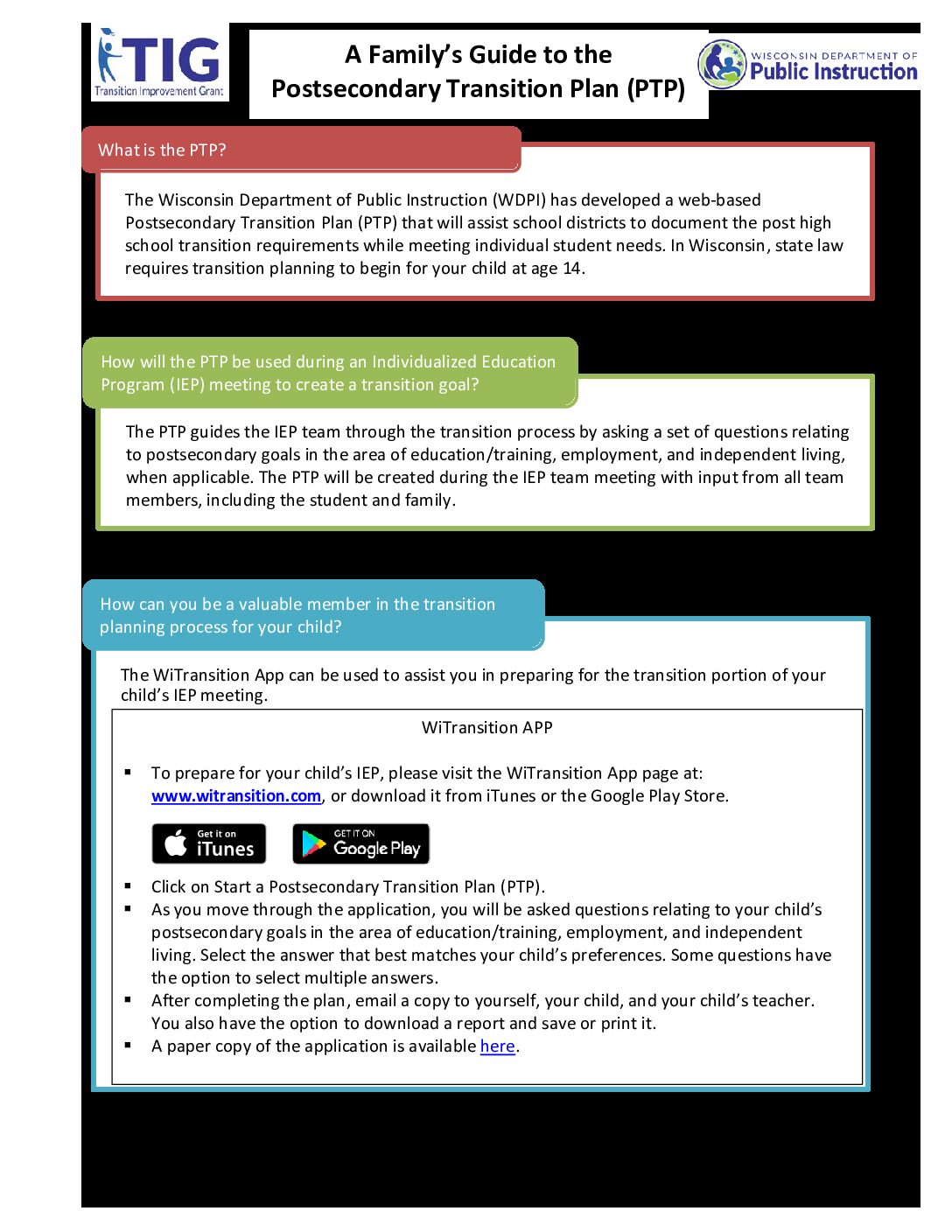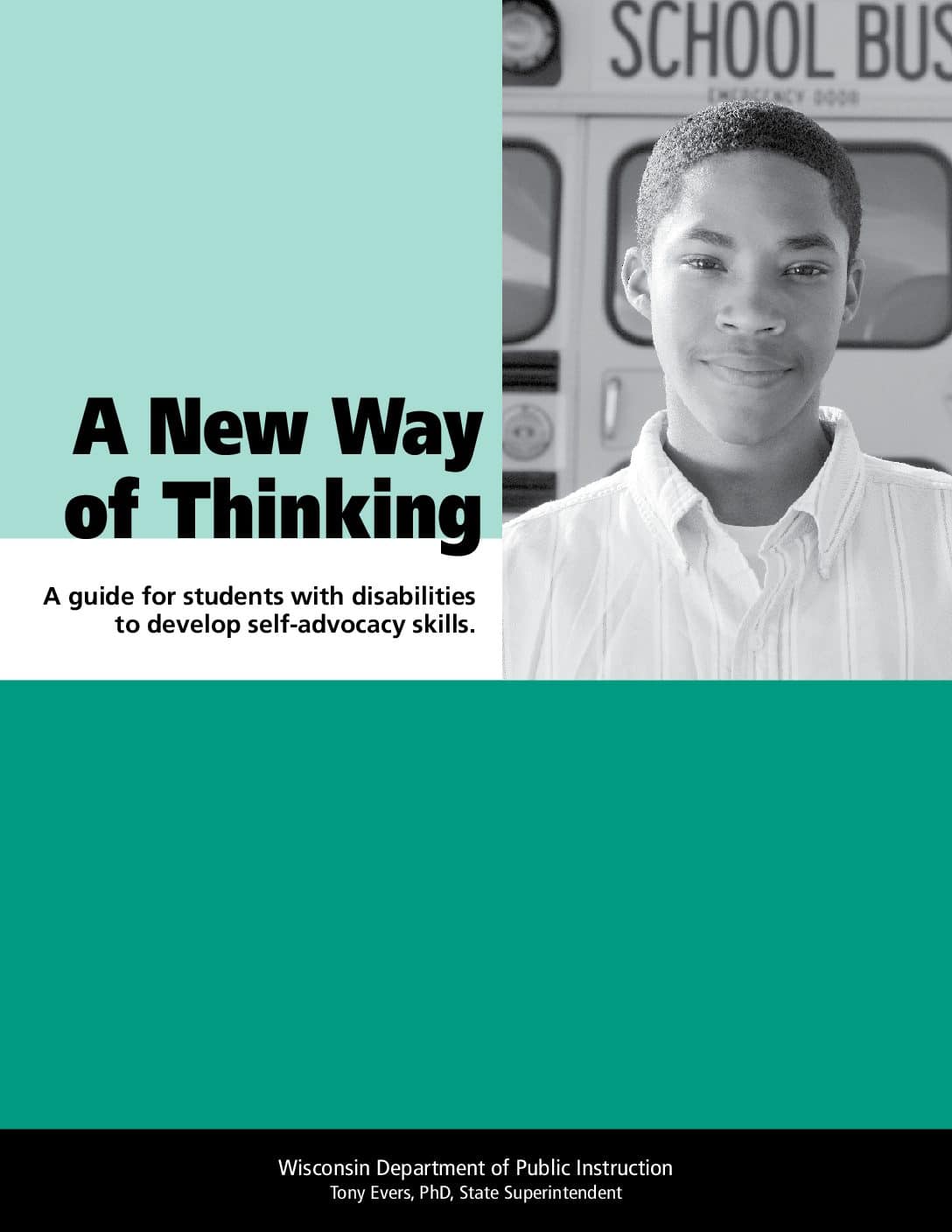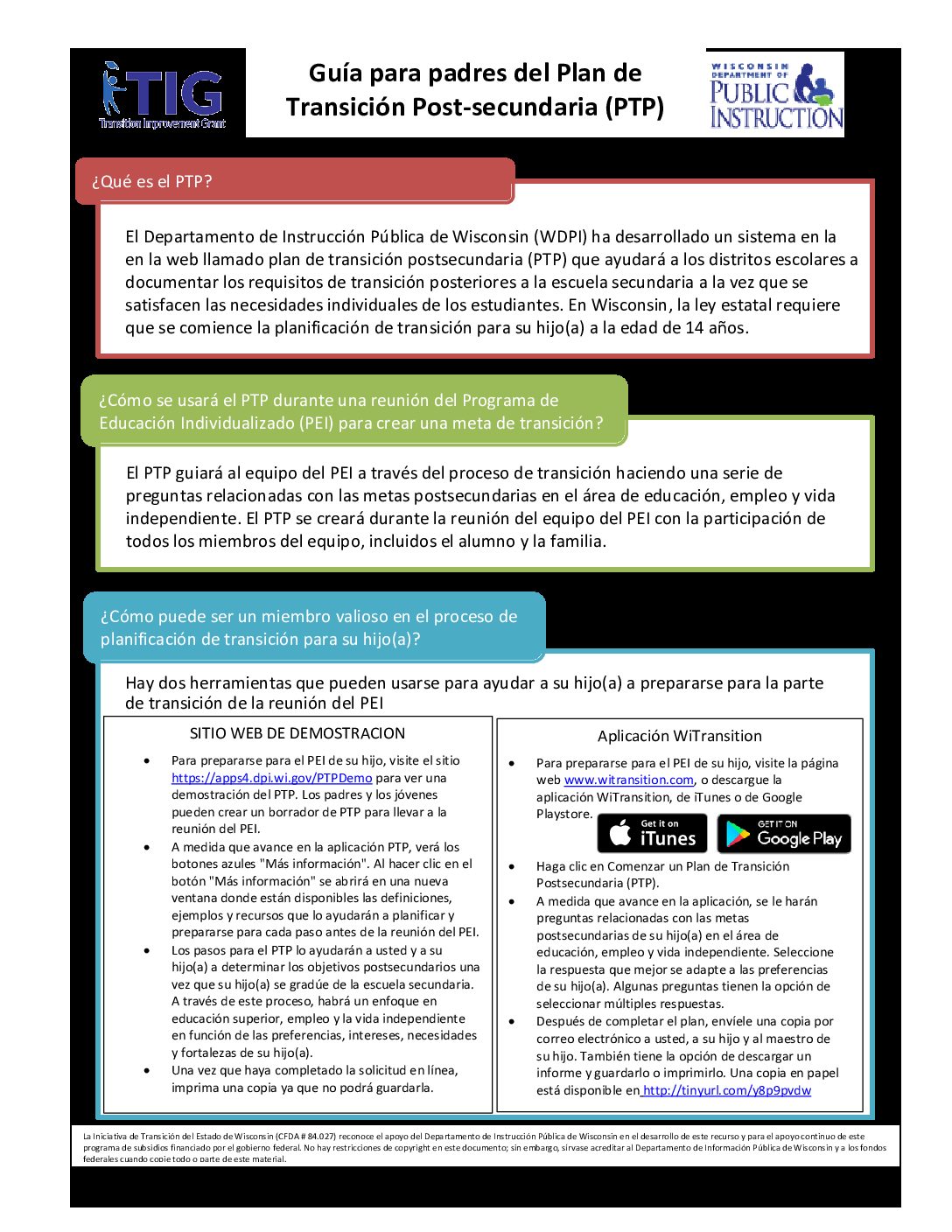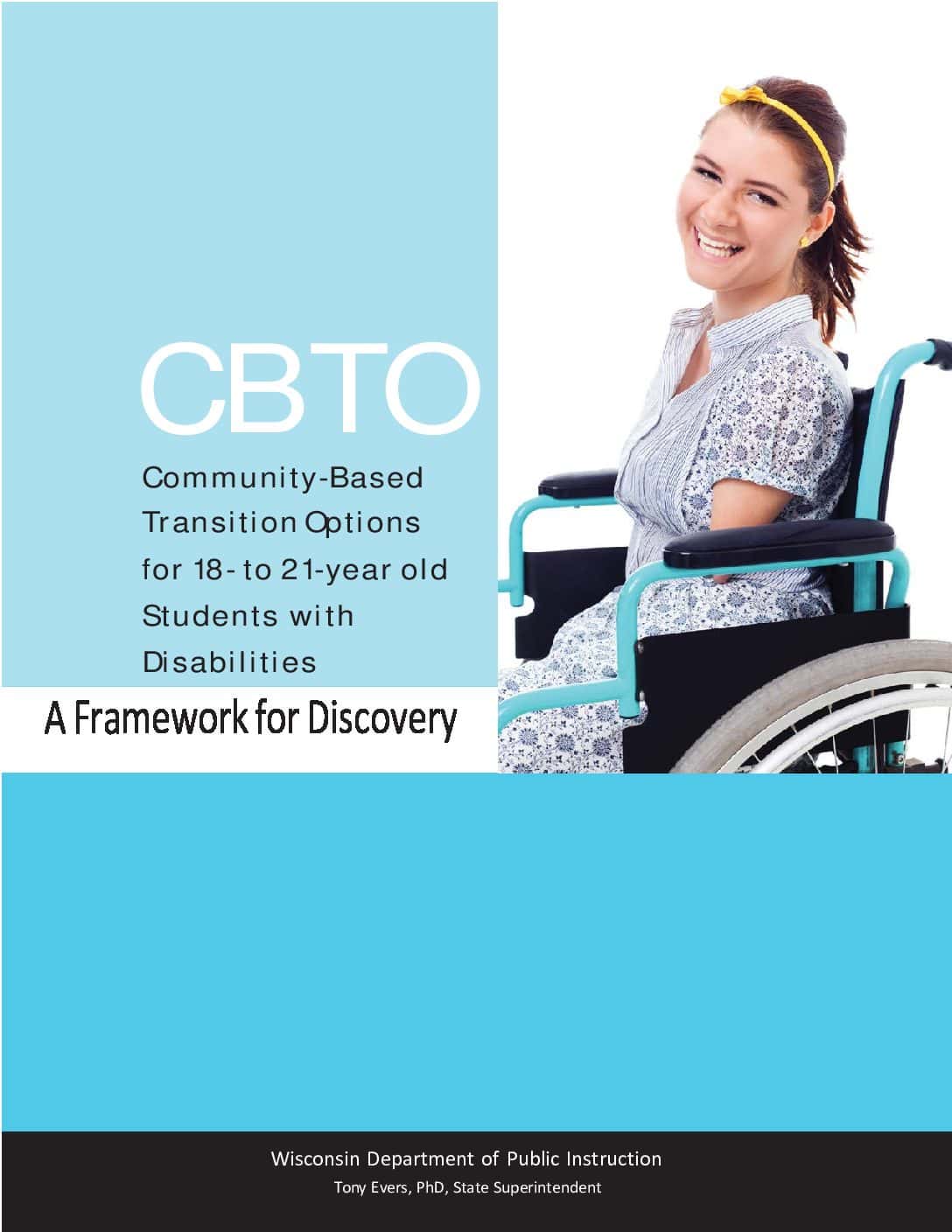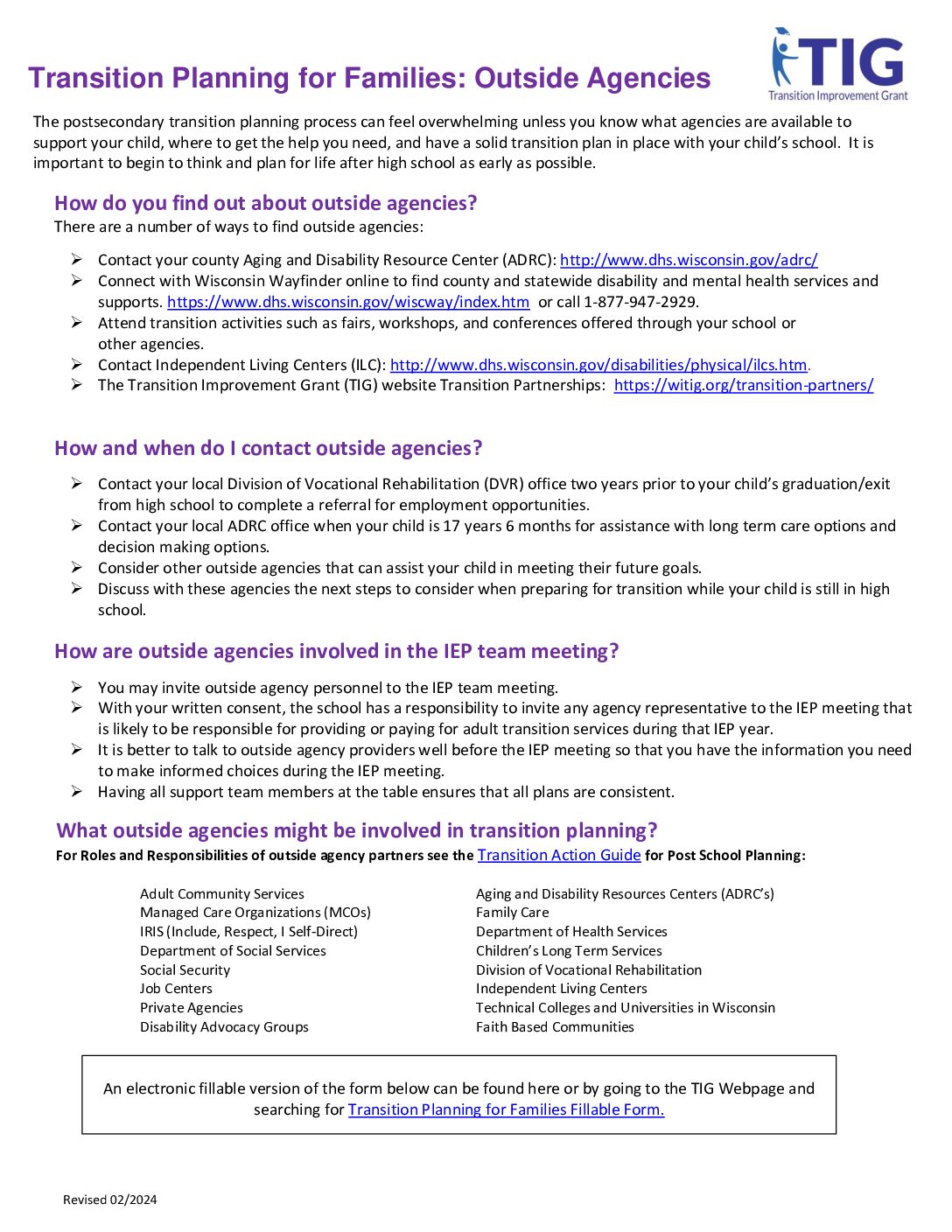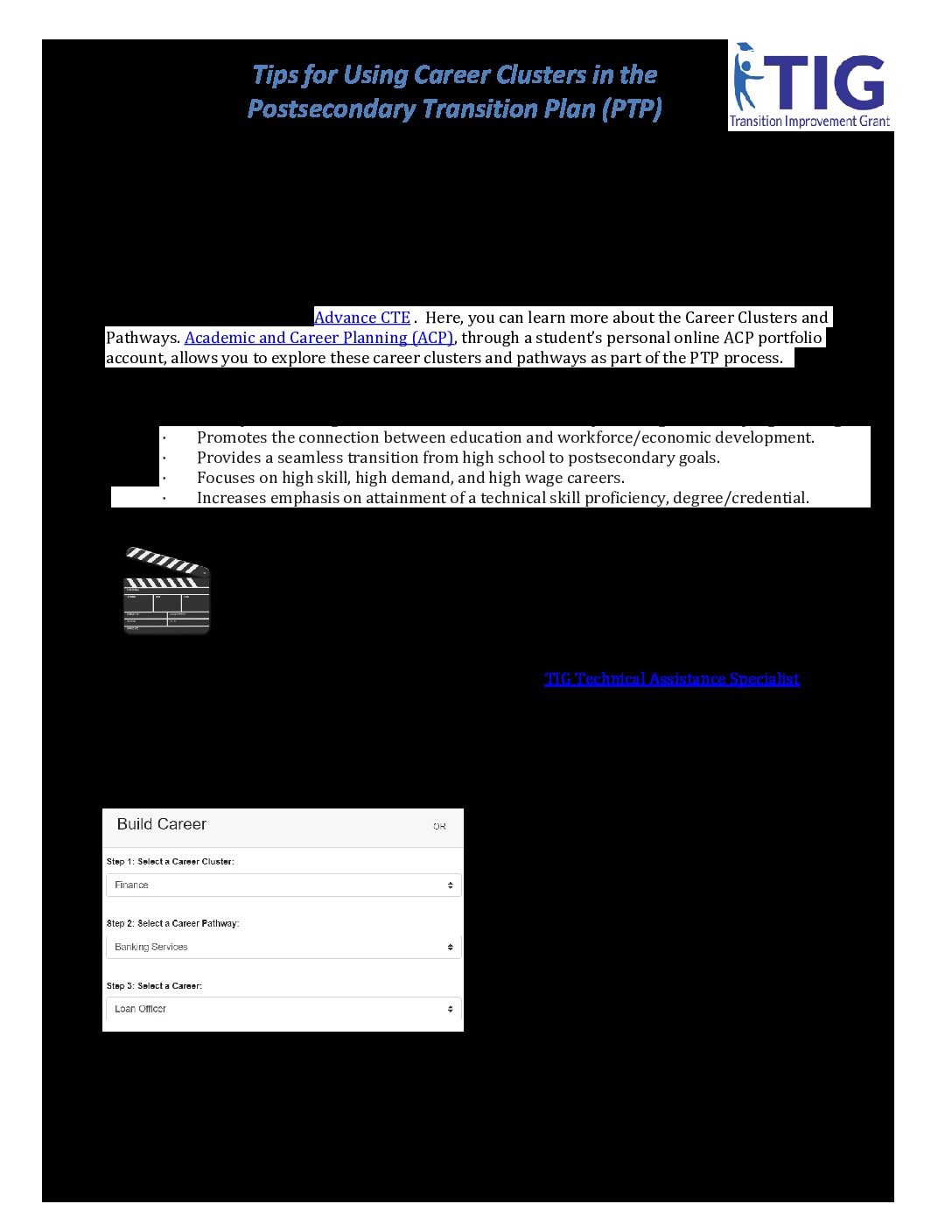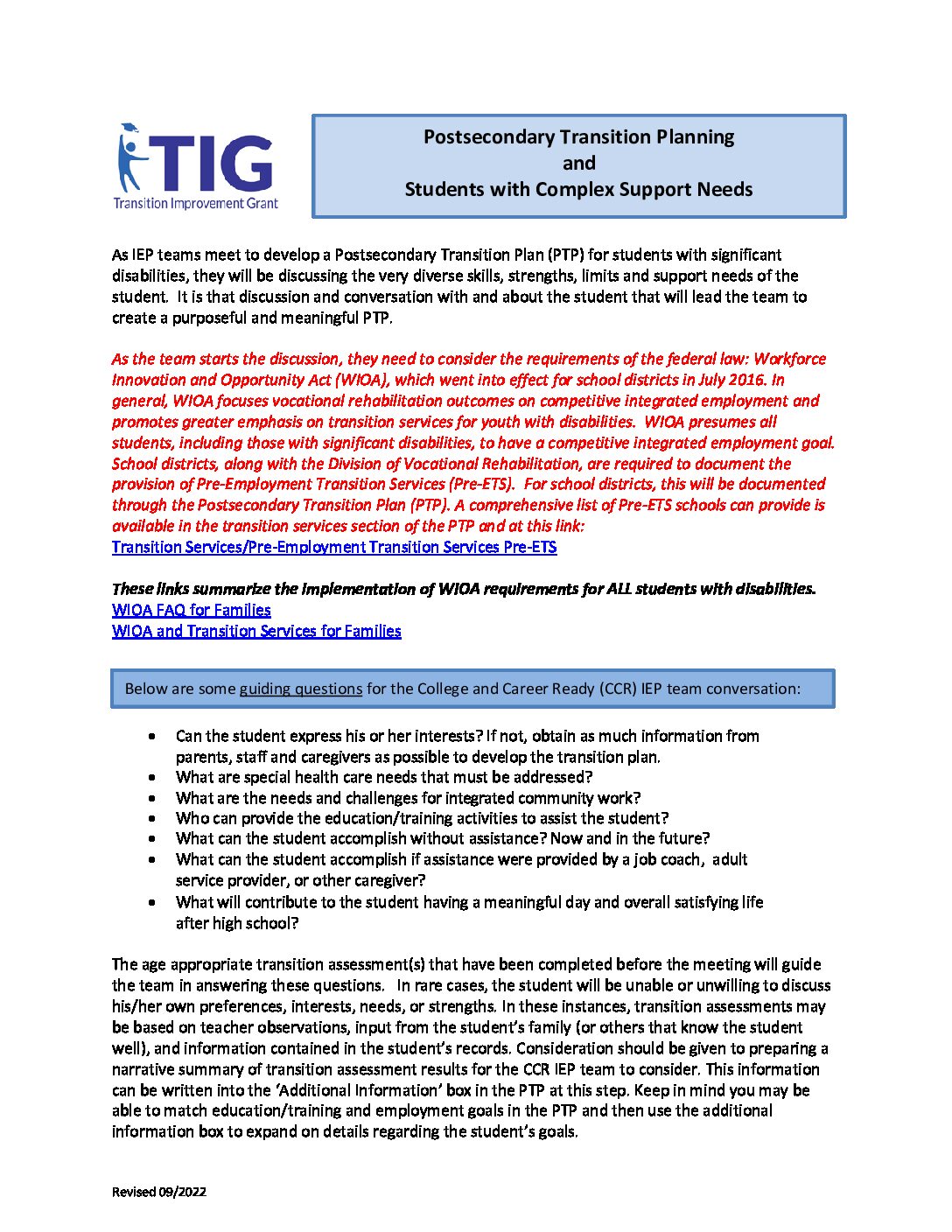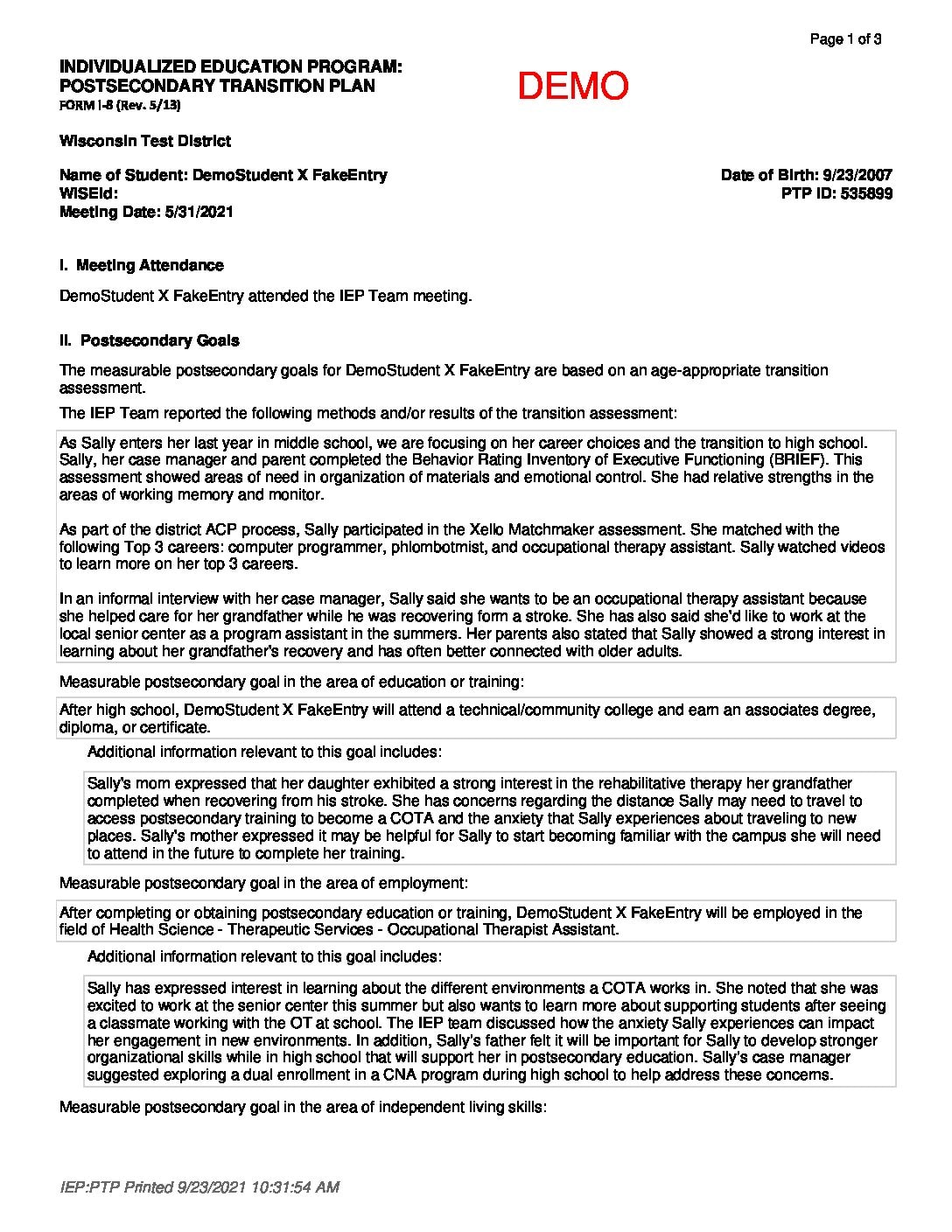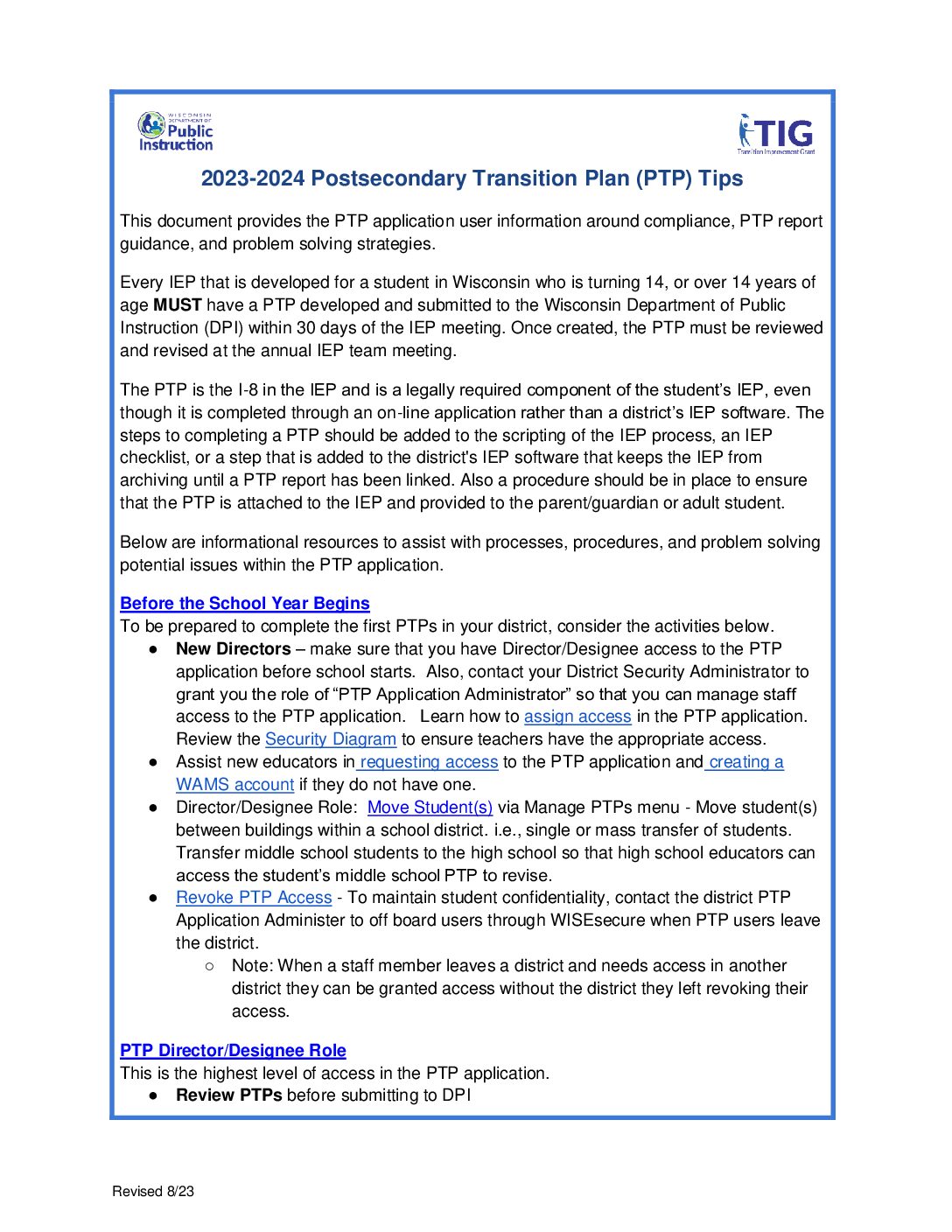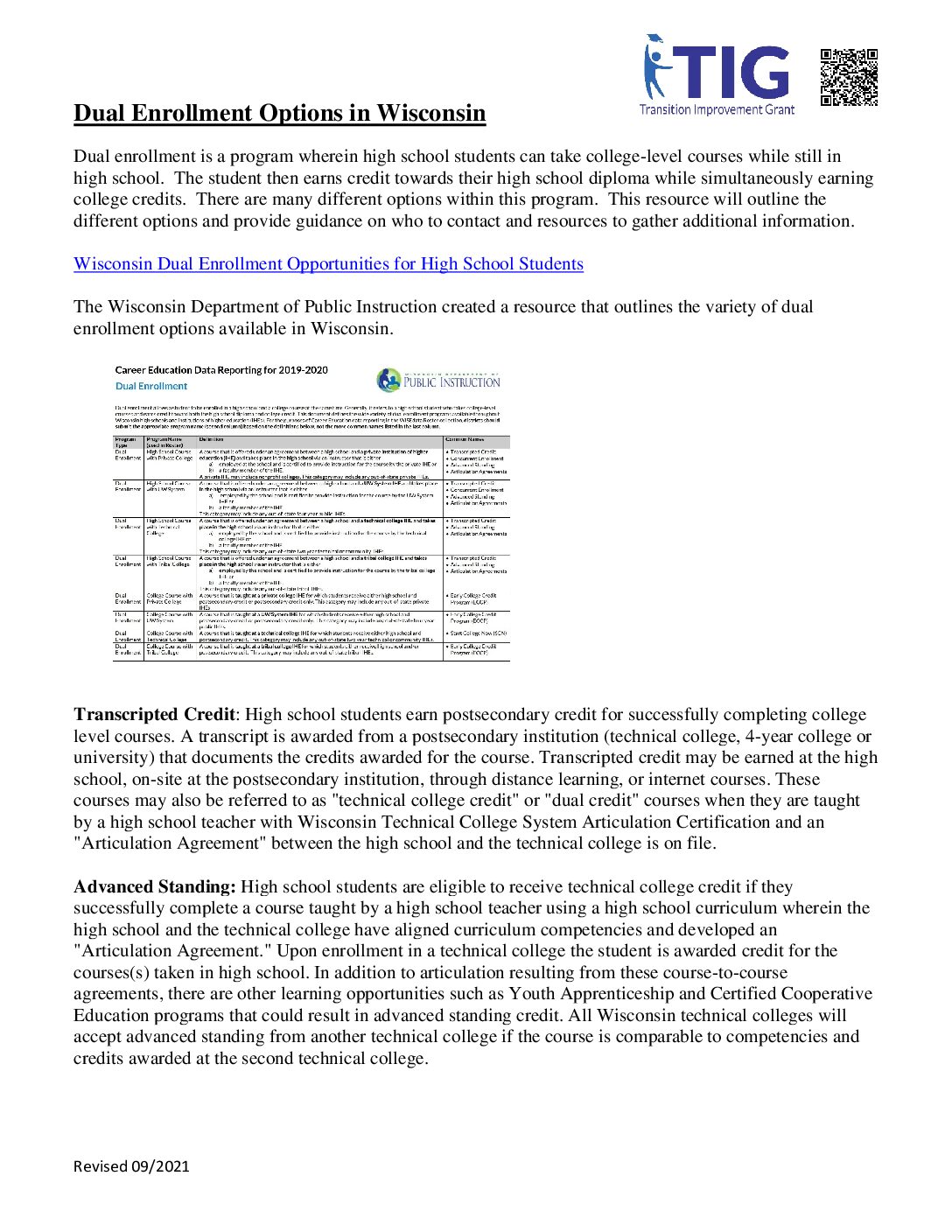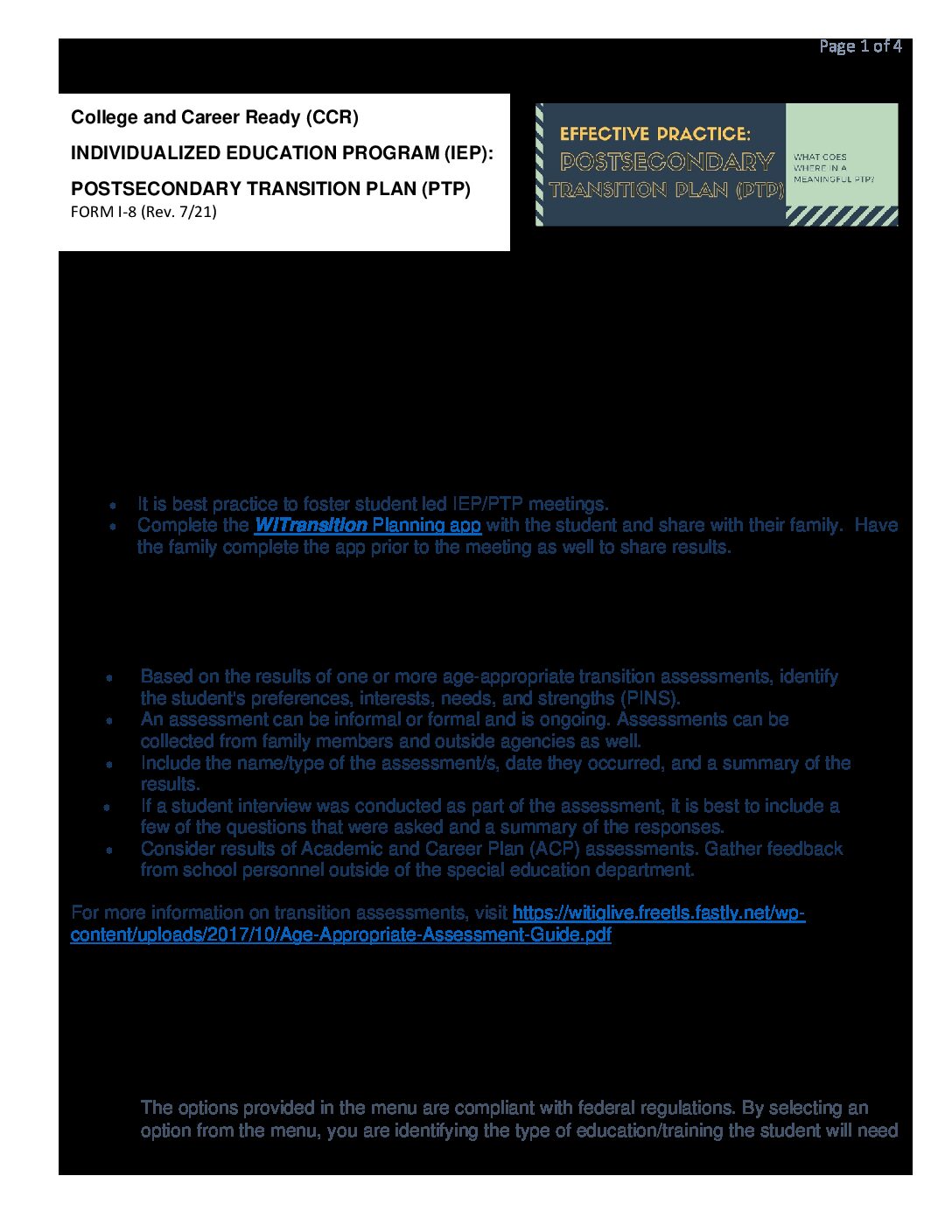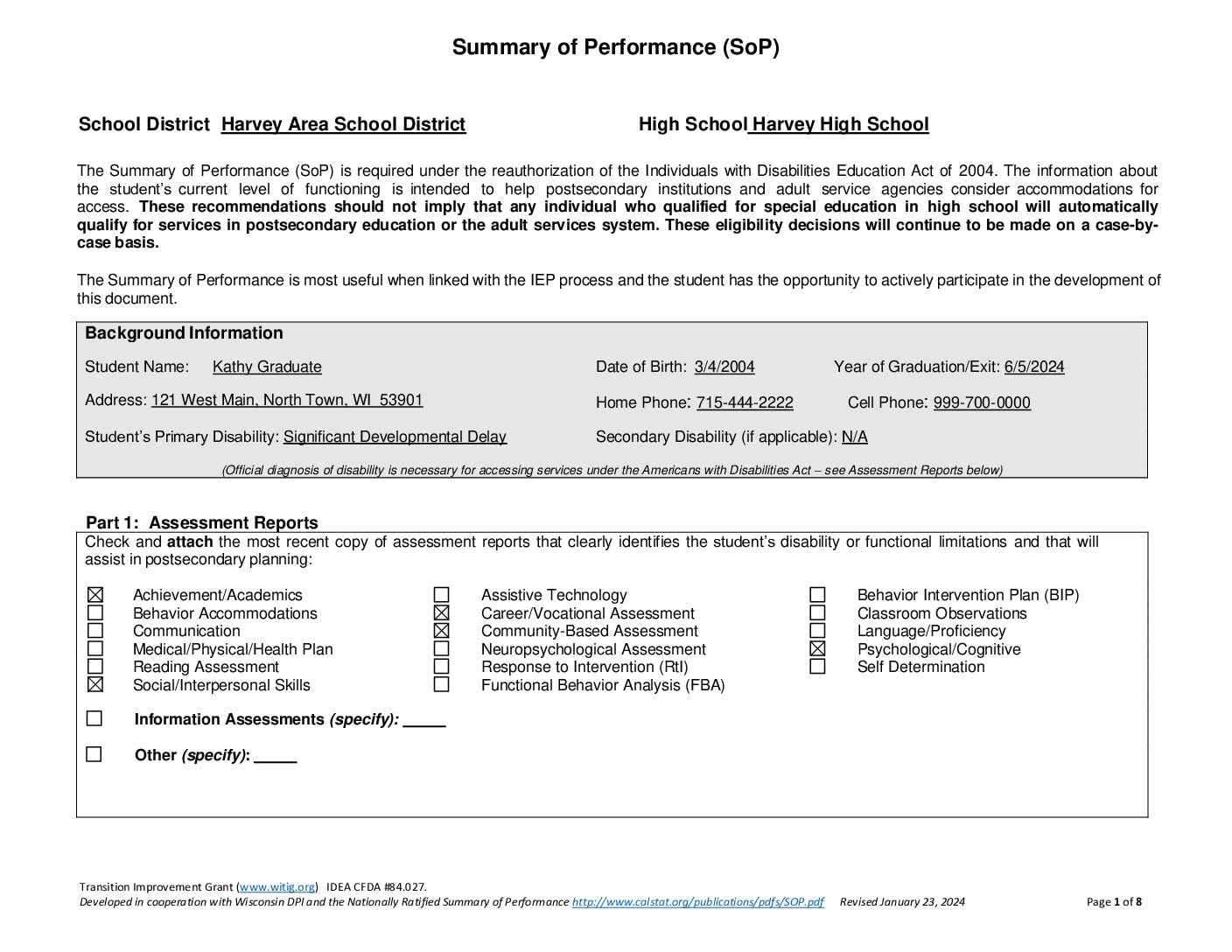Resources
TIG Self-Advocacy Guidance
Content Areas Self Advocacy
Resource Type Link
The Transition Improvement Grant (TIG) has developed a self-advocacy guidance toolkit to house TIG developed resources as well as highlight resources from national transition partners. The toolkit contains online resources such as: assessments, curricula, student led Individualized Education Program (IEP) materials, law and policy, and opportunities to grow your own learning. Self-advocacy is a predictor of post-school success for students with IEPs and the guidance will enhance the resources available and provide support for educators, students, and families.
Sample PTP – High School – Sally
Content Areas Best Practices, Indicator 13 - Postsecondary Transition Plan
Resource Type Document
This is a good example of a high school PTP.
The Postsecondary Transition Plan (PTP) Middle School Guide
Content Areas Indicator 13 - Postsecondary Transition Plan
Resource Type Document
This Guide has amazing resources, ideas and samples to build the best practice Middle School PTP. It gives pointers on Engagement, Transition Assessment, and Goals.
What You Should Know about Wisconsin Law: Your Legal Rights and Responsibilities
Content Areas Indicator 1 & 2 - Graduation and Dropout Rates, Indicator 13 - Postsecondary Transition Plan, Indicator 14 - Post School Outcomes, Self Advocacy
Resource Type Link
Formerly "On Being 18" publication from the Wisconsin Bar Association, discussing the rights and responsibilities for youth as they turn 18.
Summary of Performance (SoP) Best Practice Teacher Form – Fillable form
Content Areas Best Practices, Indicator 13 - Postsecondary Transition Plan
Resource Type Document
This is the final copy of the revised WiTIG effective practice SoP form as of 3/24/15.
A Family’s Guide to the PTP
Content Areas Indicator 13 - Postsecondary Transition Plan
Resource Type Document
This guide is to inform parents and youth of the new Postsecondary Transition Plan (PTP). It describes the new PTP application, how parents and youth can participate in the new PTP during an IEP team meeting, and gives a list of resources.
A New Way of Thinking
Content Areas Indicator 13 - Postsecondary Transition Plan, Self Advocacy
Resource Type Tool
A New Way of Thinking is a guide for educators and students with disabilities. The purpose of the guide is to assist students to develop self‐accepting attitudes, combat negative thinking, and rediscover themselves.This guide will help students to better understand their disability, think positively about themselves, make choices related to their interests, gain self‐advocacy, and develop self‐determination skills— all of which helps create effective Transition Planning.
Guía para padres del Plan de Transición Post-secundaria (PTP) – Parent/Youth PTP Guide—SPANISH version
Content Areas Indicator 13 - Postsecondary Transition Plan
Resource Type Document
Translated into Spanish, this guide is to inform parents and youth of the new Postsecondary Transition Plan (PTP). It describes the new PTP application, how parents and youth can participate in the new PTP during an IEP team meeting, and gives a list of resources.
Transition Activities as Students Advance Through High School
Content Areas Indicator 13 - Postsecondary Transition Plan
Resource Type Document
A detailed list of activities recommended for students with disabilities as they progress through high school. Along with recommendations regarding the age at which beginning the activity will be most beneficial to the student.
CBTO – Community Based Transition Options
Content Areas Indicator 13 - Postsecondary Transition Plan
Resource Type Document
This guide shares a framework for planning community-basedtransition options for 18-21 year old students with disabilities. Thistool will assist local districts in assessing needs and developingtransition-focused options within a community-based environment.In addition, the guide assists districts to create a step-by-step processusing practical activities and user-friendly forms. The forms havebeen created to identify student needs, analyze in-school andcommunity resources, set priorities, develop meaningful action plans,and establish the process for evaluation.
Transition Planning for Families
Content Areas Indicator 13 - Postsecondary Transition Plan
Resource Type Document
The postsecondary transition planning process can feel overwhelming unless you know what agencies are available to support your child, where to get the help you need, and have a solid transition plan in place with your child’s school. It is important to begin to think and plan for life after high school as early as possible.
Tips for Using Career Clusters in the PTP
Content Areas Best Practices, Indicator 13 - Postsecondary Transition Plan
Resource Type Document
The Transition Improvement Grant has put together a tip sheet to assist specifically with utilizing Wisconsin Career Pathways and the Career Clusters within your PTP development. Check out this informative sheet to find examples of how to best align career clusters for transition planning!
Postsecondary Transition Plan and Students with Complex Support Needs
Content Areas Best Practices, Indicator 13 - Postsecondary Transition Plan
Resource Type Document
This is a wonderful handout with scenarios and sample PTPs for student with significant disabilities.
Sample PTP – Middle School – Sally
Content Areas Best Practices, Indicator 13 - Postsecondary Transition Plan
Resource Type Document
This is a best practice sample Middle School PTP for schools to review.
Is Your District Represented?
Content Areas County Communities on Transition (CCoT)
Resource Type Document
This handout gives a director's guide on Wisconsin County Community on Transition (CCoTs). It outlines improving outcomes for youth with disabilities through interagency collaboration.
PTP: Tips
Content Areas Indicator 13 - Postsecondary Transition Plan
Resource Type Document
This TIP sheets gives helpful advice and links for PTP resources. Check out what's new!
Dual Enrollment Options in Wisconsin
Content Areas Best Practices, Indicator 14 - Post School Outcomes
Resource Type Document
This resources outlines the different types of dual enrollment opportunities. It provides definitions, as well as valuable links and contacts.
Effective Practice: Postsecondary Transition Plan (PTP)
Content Areas Best Practices, Indicator 13 - Postsecondary Transition Plan
Resource Type Document
This is a sample PTP using Effective Practice.
Sample Summary of Performance (SoP) Best Practice Teacher Form
Content Areas Best Practices, Indicator 13 - Postsecondary Transition Plan, Indicator 14 - Post School Outcomes
Resource Type Document
This is a sample of a best practice Summary of Performance to be used for reference.
Sample Summary of Performance – SLD
Content Areas Best Practices, Indicator 13 - Postsecondary Transition Plan, Indicator 14 - Post School Outcomes
Resource Type Document
This is a sample of a Summary of Performance for a student identified as SLD to be used as reference.


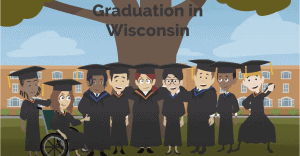

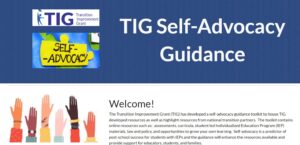 TIG Self-Advocacy Guidance Google Site
TIG Self-Advocacy Guidance Google Site 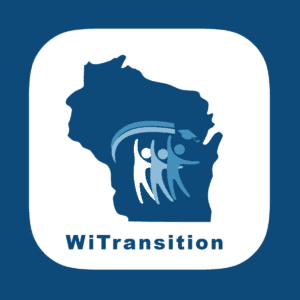
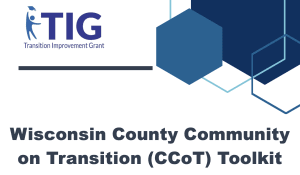 Wisconsin County Community on Transition (CCoT) Toolkit
Wisconsin County Community on Transition (CCoT) Toolkit 